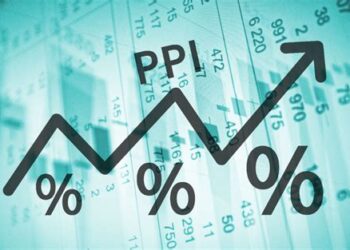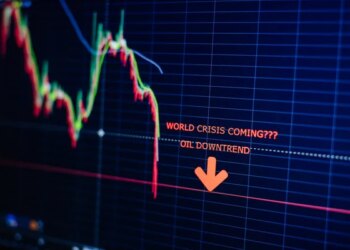The world of finance is undergoing a quiet but profound revolution. For generations, the primary goal of investing was singular: to generate the highest possible financial return. Today, a growing number of investors, from institutional behemoths to individual savers, are demanding more. They are embracing impact investing, a philosophy that seeks not only to create profit but also to generate a measurable, positive social and environmental impact. This isn’t charity or philanthropy; it’s a strategic approach that acknowledges that the health of our planet and society is inextricably linked to long-term financial stability. Impact investing’s rising popularity is a reflection of a global shift in values, driven by a new generation of investors, a growing body of evidence that purpose and profit can coexist, and the pressing need to address the world’s most urgent challenges.
This article will explore the core tenets of impact investing, delve into the market forces fueling its growth, and examine the diverse sectors where it is making a tangible difference. It will also address the challenges and ethical considerations of this burgeoning field, providing a comprehensive look at how investing with purpose is reshaping the financial landscape and creating a new, more responsible model for capital allocation.
Defining a New Investment Class
Impact investing is often confused with other forms of socially conscious finance, but it is distinct in its intentionality and its commitment to measurement.
A. ESG vs. Impact Investing: While often used interchangeably, these terms have different meanings. Environmental, Social, and Governance (ESG) investing focuses on integrating ESG factors into investment decisions to mitigate risk and improve long-term returns. For example, an ESG fund might avoid companies with poor environmental records to reduce the risk of future regulatory fines. Impact investing, however, goes a step further. It requires an intentionality to create a positive outcome and a commitment to measure that outcome. An impact investor doesn’t just avoid “bad” companies; they actively seek out “good” companies that are building a better future, whether that’s through renewable energy, affordable housing, or education.
B. The Double Bottom Line: The central concept of impact investing is the “double bottom line,” which holds that an investment’s success should be measured by both its financial return and its social or environmental impact. The goal is not to sacrifice profit for purpose but to find investments where the two are mutually reinforcing. For example, an investment in a clean energy startup could yield a strong financial return while also reducing carbon emissions.
C. A Spectrum of Returns: Impact investments can range from those seeking market-rate returns to those willing to accept below-market returns for a greater social good. This flexibility allows investors to align their capital with their values and risk tolerance. The key is that the investment must have a clear intention to generate a positive impact alongside a financial return.

The Market Drivers Behind the Boom
Several powerful forces are pushing impact investing from the periphery to the mainstream, creating a robust and diverse market.
A. The Rise of Millennial and Gen Z Investors: Younger generations are increasingly conscious of the social and environmental issues facing the world. Having grown up with constant access to information, they are more likely to align their finances with their values. This demographic shift is forcing financial institutions to offer more impact-focused products and services to attract and retain these new clients.
B. The Evidence of Performance: For years, a major barrier to impact investing was the perception that it required a sacrifice of financial returns. A growing body of research, however, is dispelling this myth. Studies from firms like Morgan Stanley and the Global Impact Investing Network (GIIN) show that impact investments can perform competitively with traditional investments, and in some cases, even outperform them. This performance data has given institutional investors the confidence to allocate capital to this sector.
C. Technological Advancements: Technology is making it easier than ever to measure and report on impact. Platforms are now available that track a company’s carbon footprint, its social metrics, and its contribution to the Sustainable Development Goals (SDGs). This transparency allows investors to verify that their money is truly making a difference.
D. The UN’s Sustainable Development Goals: The 17 SDGs provide a clear, globally recognized framework for addressing the world’s most pressing challenges. This has given impact investors a common language and a clear set of targets to aim for, from affordable clean energy (SDG 7) to quality education (SDG 4). This framework has helped to organize the market and create a sense of shared purpose.
The Sectors of Impact: Where Capital Flows
Impact investing is not a niche; it is a broad and diverse field that touches nearly every sector of the economy. Here are some of the key areas where it is making a significant difference.
- A. Renewable Energy and Clean Technology: Investments in solar, wind, and geothermal projects are a cornerstone of the impact investing movement. This capital is crucial for building the infrastructure needed to transition away from fossil fuels. It also includes investments in energy storage, smart grid technology, and other innovations that will power a sustainable future.
- B. Sustainable Agriculture and Food Systems: Impact investors are funding startups and projects that focus on regenerative agriculture, which restores soil health, reduces carbon emissions, and improves biodiversity. They are also investing in companies that are developing plant-based proteins, reducing food waste, and creating more resilient food systems that can feed a growing global population.
- C. Affordable and Inclusive Finance: This sector focuses on providing financial services to underserved communities, from microloans for entrepreneurs in developing countries to affordable housing projects in urban centers. It’s about ensuring that everyone has access to the capital they need to build a better life, regardless of their income or location.
- D. Healthcare and Wellness: Impact capital is being directed toward companies that are developing life-saving vaccines, improving access to healthcare in low-income regions, and creating new solutions for mental health and well-being. This sector is about investing in technologies and services that improve the health outcomes of communities.
- E. Quality Education: From ed-tech platforms that provide affordable online learning to schools that are building new models for education, impact investors are funding projects that are helping to close the global education gap and provide people with the skills they need to succeed in the 21st-century economy.
Challenges and The Road Ahead
Despite its growth, impact investing faces several significant challenges that must be addressed for it to reach its full potential.
- A. The Challenge of Measurement: While technology has made measuring impact easier, there is still no universally accepted standard for doing so. This can make it difficult to compare the social or environmental return of one investment against another. The industry is working on developing common frameworks and metrics to address this.
- B. The Risk of “Impact Washing”: Just as “greenwashing” refers to companies that make unsubstantiated environmental claims, “impact washing” is a major concern in this field. This is when an investment is marketed as “impactful” but has no real intention or measurable outcome. It is up to investors and due diligence to hold these companies accountable and maintain the integrity of the market.
- C. The Need for Liquidity: Many impact investments, particularly those in private equity or venture capital, are illiquid. This means that an investor’s money can be tied up for many years before they can exit the investment. While this is not unique to impact investing, it is a barrier for retail investors who may need more flexibility.
- D. The Search for Talent: As the market grows, there is a rising demand for professionals who are skilled in both finance and social/environmental impact. The need for a new generation of analysts and portfolio managers who can assess both the financial and non-financial returns of an investment is critical for the industry’s continued growth.
The future of impact investing is bright. As more capital flows into the sector, it will become easier to fund innovative solutions to global challenges. The ultimate goal is not for impact investing to be a separate category but for all investing to become a form of impact investing, where a positive contribution to society and the planet is a fundamental part of every investment decision. It is a powerful idea that has the potential to align our financial system with our deepest values and build a more sustainable and equitable world for generations to come.













